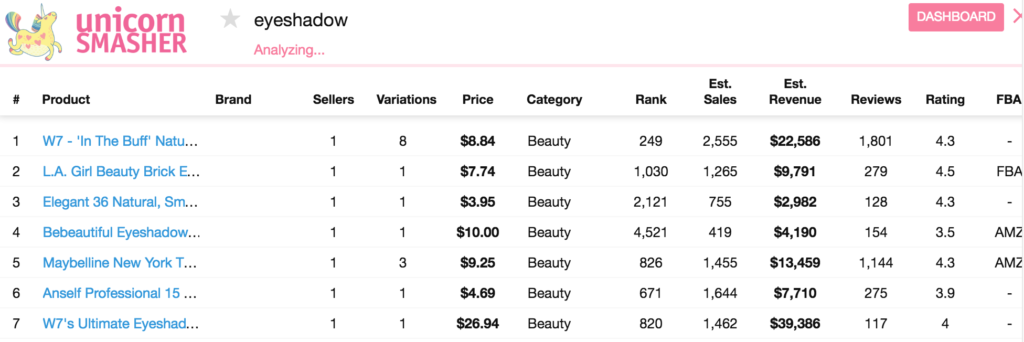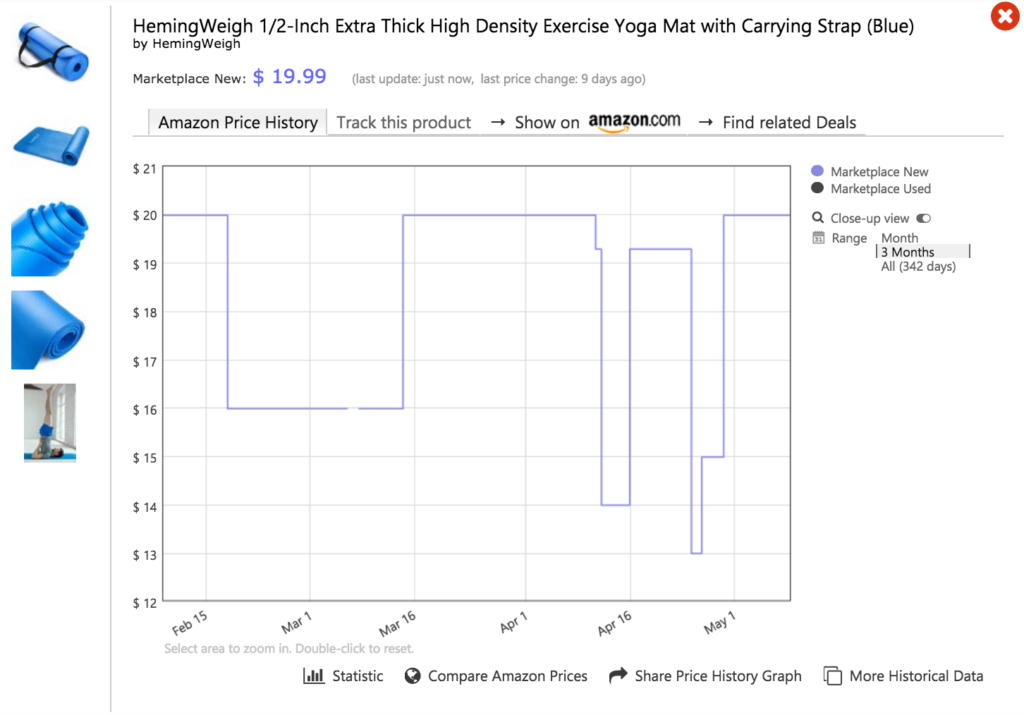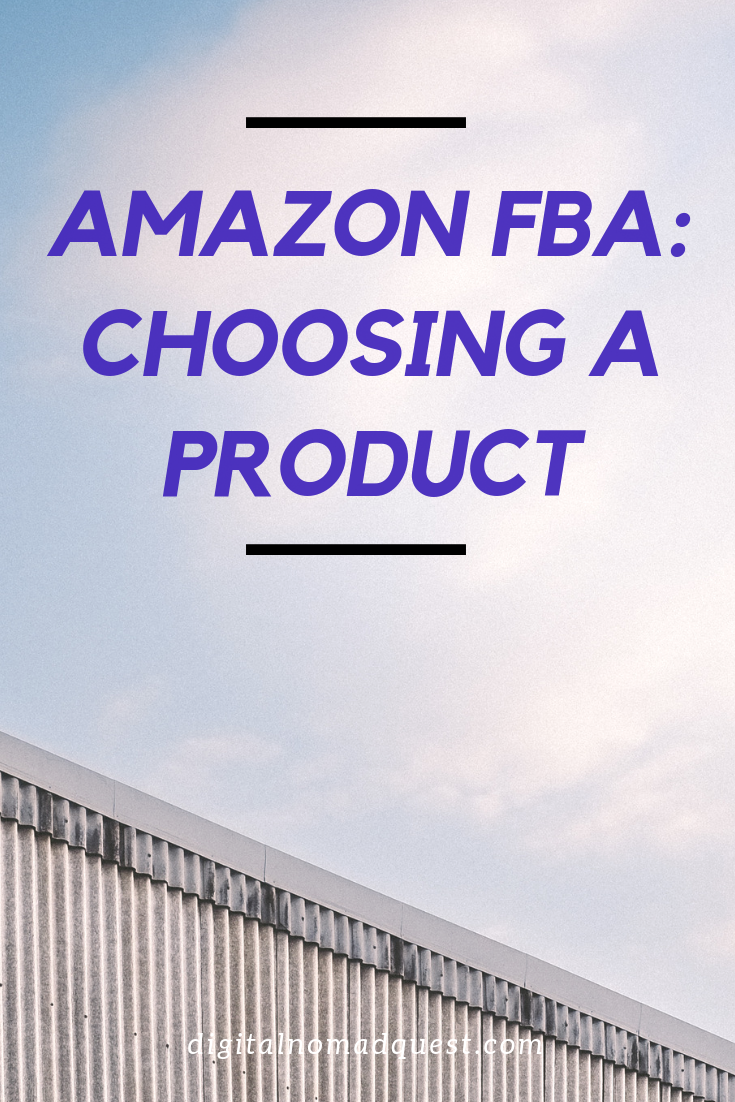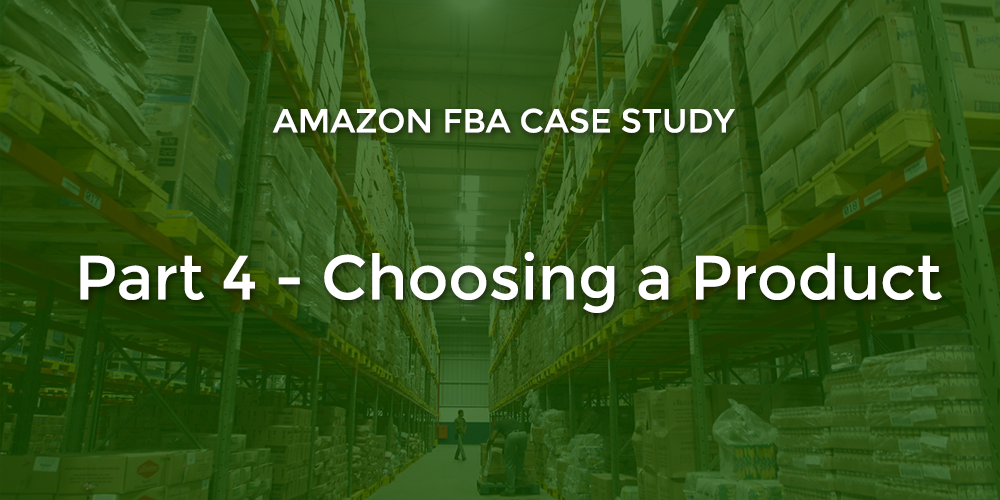Welcome to part 4 of the Amazon FBA case study (Amazon FBA: Choosing a Product)! We’re finally getting into the meat of the entire process. In the past 3 segments, we’ve discussed the overall concept of Amazon FBA, the timeline for how to proceed with the process, and the resources I’ve used. Now, here’s my post around how to choose a product!
How did I choose my product?
I actually found my product after walking around at a conference. I saw a product that I was interested in using myself, and then I thought about trying Amazon FBA with it. I started brainstorming and researching – thinking about how it would compare to its competition and how I can improve upon the product. It essentially met all of the requirements (listed below) so I decided to use it as my first test.
Now, let’s dive into the guidelines/criteria for choosing your opportunity.
Guidelines on Choosing Your Product?
Choosing a product is actually one of the hardest parts of Amazon FBA Private Labeling as it’s difficult to find a product that fulfills a bunch of different criteria. And it is CRUCIAL to purchase a product that checks off because you don’t want to get stuck with something that sits in the their warehouse and seeps money from you. You actually have to pay monthly storage fees and membership fees.
The monthly Amazon pro account fees are $39/month.
Here are the inventory storage fees:
| Month | Standard-Size | Oversize |
| January – September | $0.54 per cubic foot | $0.43 per cubic foot |
| October -December | $0.72 per cubic foot | $0.57 per cubic foot |
You can find more information here. Honestly the prices are not that bad. But obviously it’s better to find a product that just WORKS so you don’t have to worry about the expenses/liabilities because the income covers it all.
Okay getting back on topic.
When it comes to choosing a product, it is best to look for something light (lower shipping costs), with low competition (less sellers to compete with), high number of product searches (so there’s demand), and high profit margins (so you can pocket more money).
What does this entail exactly?
Product Checklist
Below is a checklist of things I looked for. I am keeping this list shorter than others out there because I think some rules are more up for debate.
- Priced around $15-$50 on Amazon. Preferably $20-50. The thing is Amazon takes a bit of a cut per sale to fulfill your orders, which means you should find items that can sell for at least $15+. If you’re selling lower than that you’re going to make too little per sale to make up for your overhead costs. Make sure the product costs aren’t too high either (over $50). Basically this $15-$50 range is the impulse buy range in which people are more likely to buy without a whole lot of consideration.
- Should be under 2-3 pounds – When your supplier ships your items to Amazon you’re going to be in shock about how expensive it can be. Since you’re normally shipping hundreds or thousands of items, costs can run up to thousands of dollars. That’s why the lighter the item, the cheaper it is to move to the Amazon warehouses. Not only that, lighter items also mean less costs for Amazon to ship them to your customers.
- A competitor product ranks 5,000 or better for Best Seller ranking – What is the Best Seller ranking you ask? The Best Seller ranking is listed at the bottom of the product details on Amazon. Below is an example of what this looks like.
- As you can see there are a few different rankings shown, but for our purposes you should refer to the top level overarching category. In this case, “Health & Personal Care” is what you should look at. Based on the BSR below, this product wouldn’t meet requirements (but again these are not STRICT guidelines).
![]()
- No extremely famous brand name competitors – This makes it harder for you to rank and get sales especially when most will buy the brand name product.
- Not fragile/easily breakable – You don’t want your product broken when sent over to Amazon or to your customer.
- Top sellers have less than 400 reviews – Less competition.
- 2-3 products with less than 50 reviews on the first page – Less competition.
- 50% profit margins at minimum – When profit margins are too low it gets riskier to list on Amazon due to the incurring fees.
Now these are quick tips but they are not strict guidelines. A lot of people find that the lightweight item market is getting too saturated and that heavier items have worked as well. And some people are more willing than others to jump into a market that has a lot of competitors when regarding a heavily searched product.
In my case, I am trying to dive into a market with less competitors because I want my product to succeed even if I don’t get it a lot of reviews. Maybe it isn’t as searched upon as others, but if it sells without any extra work, I’m totally okay with it!
Which Tools to Use for Further Validation
- Unicorn Smasher – Unicorn Smasher is a Google Chrome extension you can get for FREE (but of course they also have a web app with a full dashboard that costs over $50/month). This tool lets you see estimated revenue and sales per month of competitor products like so:

- Jungle Scout – Jungle Scout has a one time fee for its Chrome extension ($87) so I recommend just going with the Unicorn Smasher tool if you’re going to use an extension. If you’re going to try their web app with full dashboard, there’s a monthly fee of $39+. I tried out the free month trial, and it was actually very useful. It not only provides competitor analysis functionality but also provides ways to research products. For the product research side it’ll let you find products by category, amount of sales/revenue, weight, # of ratings, best seller ranking, price, and more.
- Keepa Amazon Price Tracker – This tool allows you to track prices of competitor products over time (and it’s free).

- Amazon FBA Revenue Calculator – This is essential for understanding your profit margins and making sure they are higher than 50%. To use it, put in the ASIN of a competitor product. Then on the left under “Your Fulfillment” – enter how much you would pay for the product + for shipping of each unit. And under “Amazon Fulfillment” and “Item Price”, enter how much you are listing the product for on Amazon.

Your profits will be shown at the bottom in green font:

Which Niches to Avoid According to the Amazing Selling Machine
The below list was pulled on livinthatlife. It shows niches to avoid – but I can’t attest to how true these are though!
- Automotive & Powersports
- Apps
- Books, e-books
- Clothing, Accessories & Luggage
- Collectible Books
- Entertainment Collectibles
- Gift Cards
- Industrial & Scientific
- Jewelry
- Magazines
- MP3’s
- Shoes, Handbags & Sunglasses
- Sports Collectibles
- Toys & Games (holiday approval products only)
- Watches
How to Conduct Product Research
Conducting product research is honestly frustrating. A lot of times I’ll think “this could be it!” and through further digging realize I have to scrap the idea.
Some things to try when you’re looking for a product:
- Look around the house and keep an eye out for interesting products. Get into the habit of constantly having Amazon FBA product research in the back of your mind.
- Browse Amazon Top Sellers and comb through different opportunities. Start with the top 100 and then go into the sub-categories.
- Use Unicorn Smasher to spy on your competition.
- Or if you want to pay monthly for the Jungle Scout web app, use their product research tool to find potential opportunities.
- Check if the products you are looking for meet the criteria listed above, and search on Alibaba for the products as well as the Amazon FBA Revenue Calculator to estimate the profit margins around different products.
- Use Google Sheets to keep track of any possible opportunities.
Conclusion
I hope that was helpful! You’re going to find that the market is getting super saturated and that there are many competitors for most products you think of. For my own product, I went with something that has decent to low competition and costs under $1300 for 500 units. I’m still having difficulty with actually listing and ordering the product, but I’ll update you on my progress in the next few chapters.



Comments 2
Positiva day Sharon
The other day a friend established in China was asking me to find him information about the amazon FDA.
An entrepreneurs group on fb, an artcle on fast company and here I’m in this blog reading your test.
Following this adventure.
Thanks for the resources and keep up the good work
Author
Awesome thanks! I’m actually taking a break on FBA right now. But I’m planning to start this up soon. Once I do, I will be updating this part of the blog!
I’m actually taking a break on FBA right now. But I’m planning to start this up soon. Once I do, I will be updating this part of the blog!